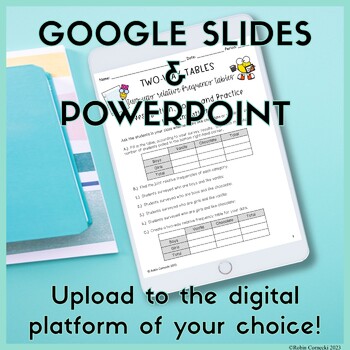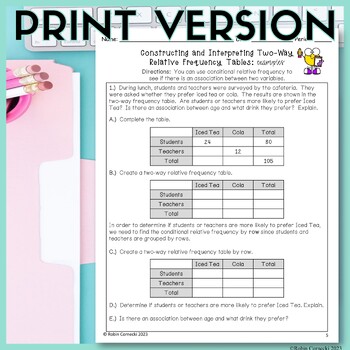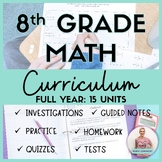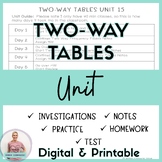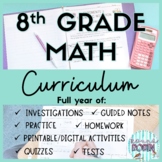Two Way Relative Frequency Tables Guided Notes Practice HW 8th Grade Math
- Zip
- Google Apps™
- Microsoft OneDrive

Also included in
- Are you looking for an entire 8th-grade math Curriculum with warm-ups, guided notes, practice worksheets, homework, and editable assessments? Look no further than this 8th-grade math GROWING curriculum full-year bundle. The following 8th-grade Math Curriculum is wholly aligned with Common Core StPrice $180.00Original Price $225.00Save $45.00
- This Two Way Tables Bundle is everything you need to teach your middle school math students about two-way frequency tables to understand that patterns of association can be seen in bivariate categorical data by displaying frequencies and relative frequencies in a two-way table. ✅ Includes:InvestigatPrice $7.60Original Price $9.50Save $1.90
- Are you looking for an entire 8th Grade Math Curriculum with guided notes, activities, AND editable assessments? Look no further than this 8th-grade math GROWING curriculum full year bundle. The following 8th-grade Math Curriculum is wholly aligned with Common Core State Standards for 8th grade iPrice $292.80Original Price $366.00Save $73.20
Description
Two-Way Relative Frequency Tables Guided Notes is everything that you need to teach your middle school math students Constructing and Interpreting Two-Way Relative Frequency Tables. Students will also identify Joint Relative Frequency, Conditional Relative Frequency, and Marginal Relative Frequency through investigation and practice examples. These guided notes and practice worksheets are perfect for a binder or can be reduced in size to fit into an interactive notebook.
✅This resource is perfect for Distance Learning (zero prep) or in the classroom. It can be used with Google™ or Microsoft™. You will receive a pdf with the printables, a link to the Google slides, a PowerPoint version, and an answer key.
You must have a free Google™ account to access the Google™ slides.
⭐ These worksheets can be used digitally or in person with the provided pdf handouts included.⭐
✅9 pages plus answer keys of notes and practice problems include:
- Optional Do Now/Warm Up
- Investigation with guided notes and practice problems to do together in class and several "your turn" problems for students to do independently so you can check their understanding before you assign the homework.
- 5 practice problems(with several parts) include a review of prior topics + a challenge question that can be used as in-class work, homework, or group work
✅ Plenty of room for your students to write down their answers and show their work!
✨This is my second lesson in my Two Way Tables Unit (coming soon)
You may also like:
Related Products
⭐ 8th Grade Math Full Year Curriculum Growing Bundle
⭐ Two-Way Frequency Tables Guided Notes
⭐ Two-Way Relative Frequency Tables Guided Notes
Don't forget to leave a review to earn credit toward future resources at no extra cost!
Let's be social!


